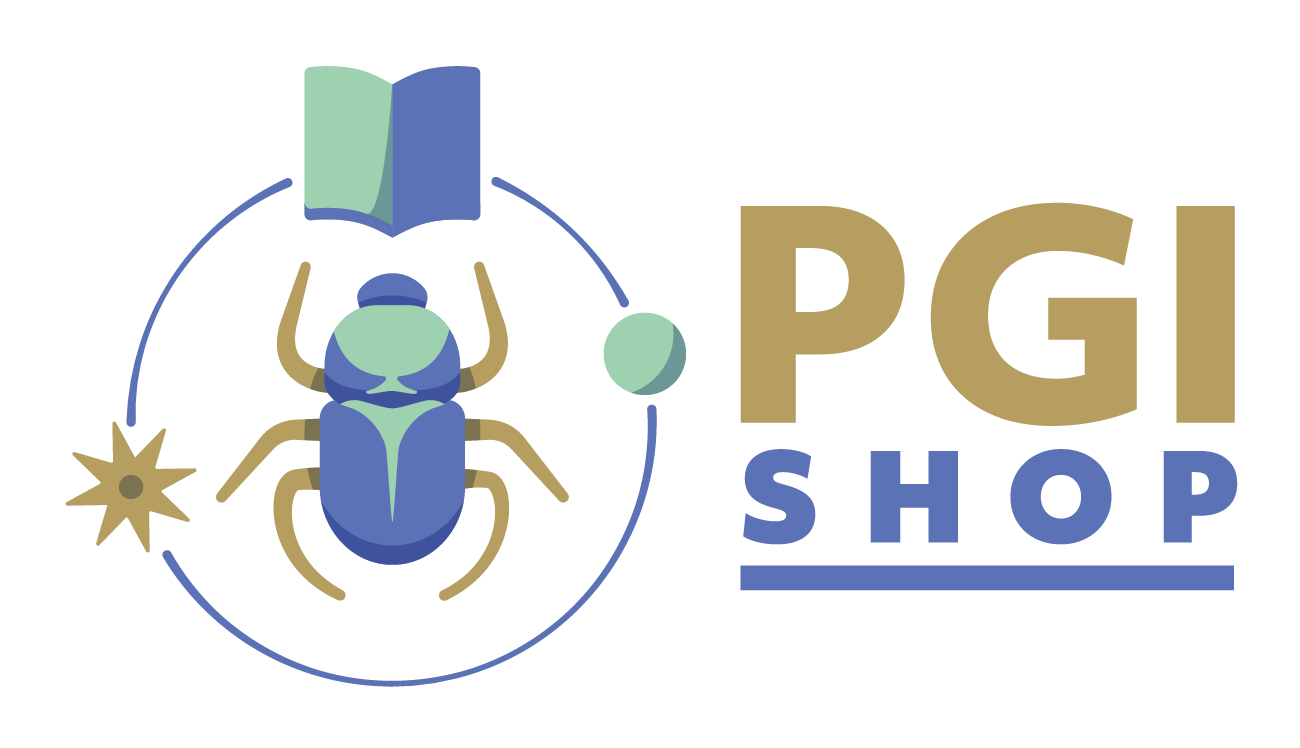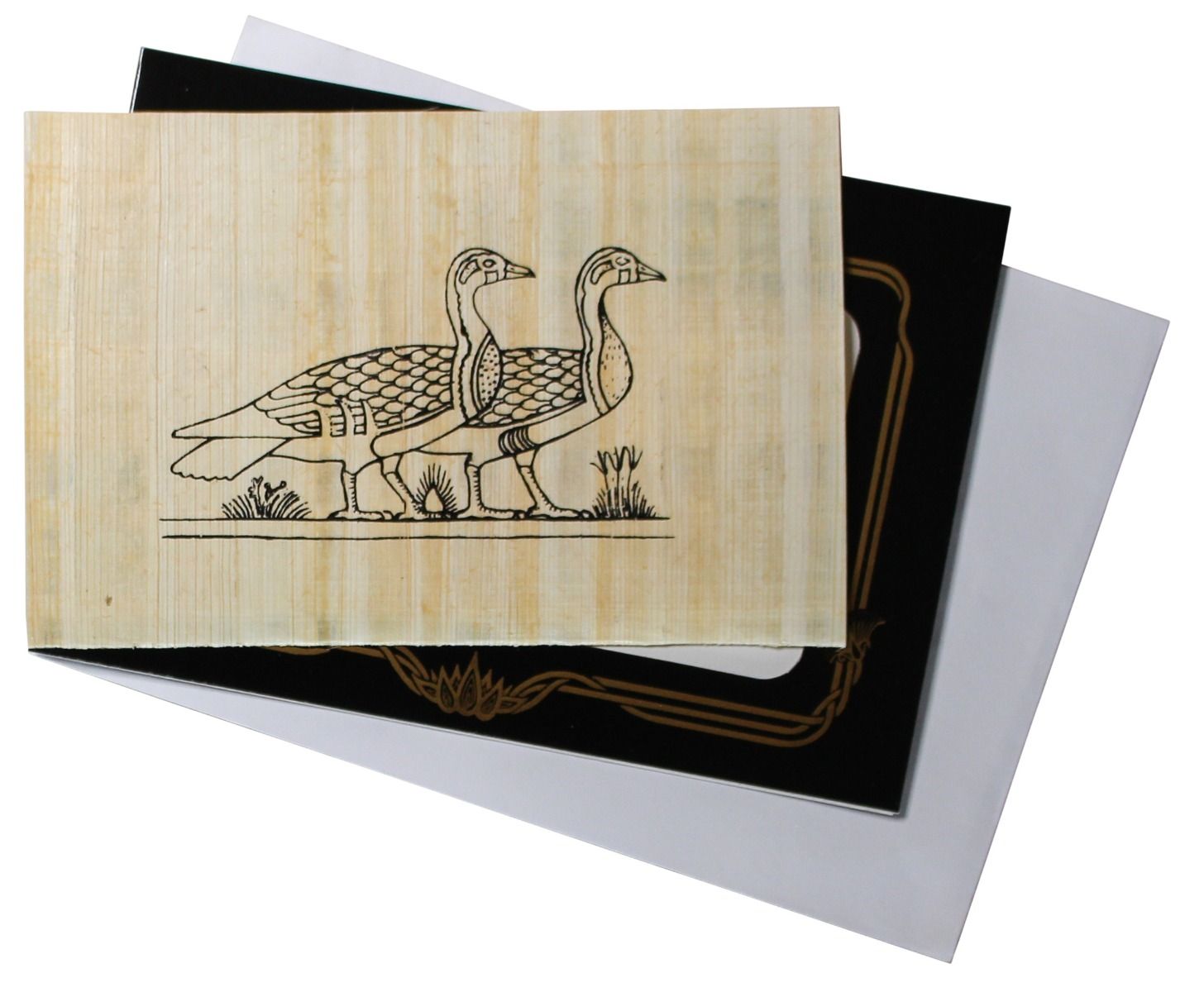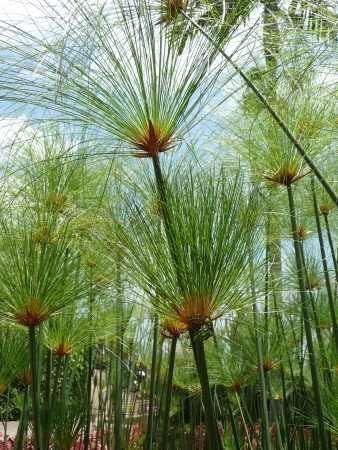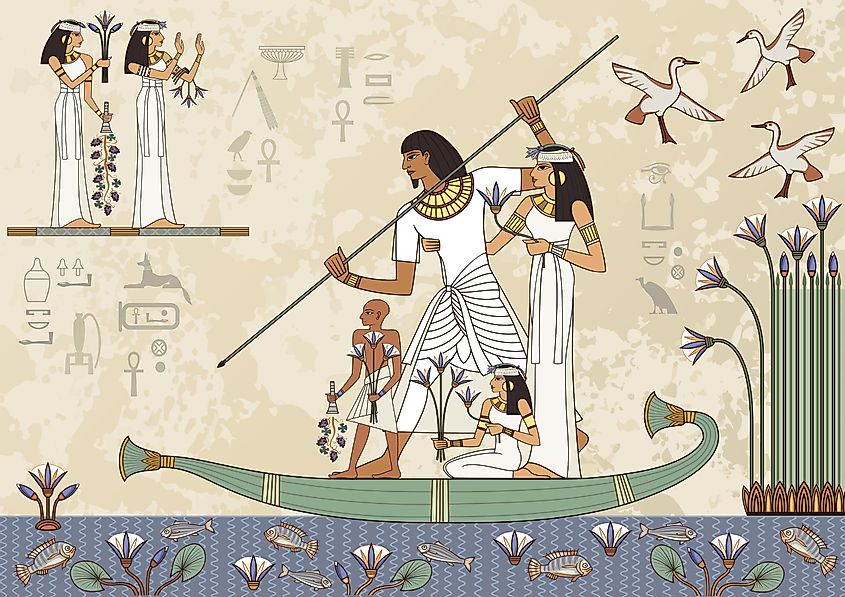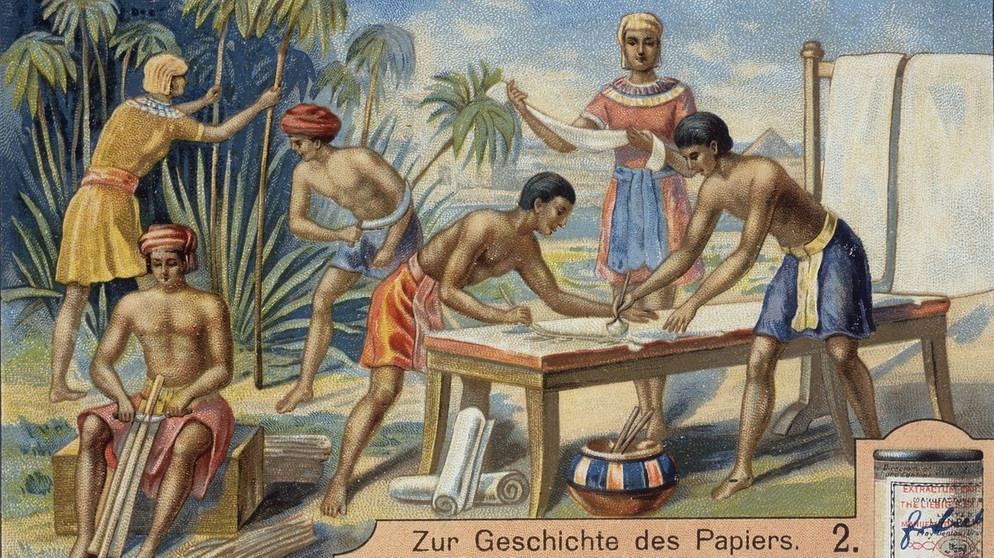Papyrus Mini-Gallery - Geese by Medum
Natural papyrus with outline motif 11.5 × 16.5 cm, black folding passe-partout, writing paper as well as a hanging eyelet.
Mini gallery pictures are an inexpensive introduction to papyrus painting.
The ready-painted pictures are a tasteful gift for many occasions.
To the motif
Egyptian painting reached its first peak with the famous "Geese of Meidum". A frieze of six geese formed part of the bird-hunting scene in the tomb of Princess Itet at Medum. The motif was painted on gesso, a colour-prepared painting ground made of alabaster plaster. The choice of colours and the delicacy of the lines make this painting a masterpiece.
To paint:
12 double fibre pencil - Article No. 2701
Pilot Pintor: White, Gold, Silver - Article No. 2703
PGI papyrus
made of hand laid papyrus, produced in Egypt
silkscreen motif, natural border
can be painted with pens and watercolours
| Aspiration scale: | Easy |
|---|---|
| Time Line: | 45 Min |
Geese of Medum
Egyptian painting reached its first peak with the famous "Geese of Meidum". A frieze of six geese formed part of the bird-hunting scene in the tomb of Princess Itet at Medum. The motif was painted on gesso, a colour-prepared painting ground made of alabaster plaster. The choice of colours and the delicacy of the lines make the painting a masterpiece.
Nefermaat and Itet were married and had fifteen children together. Nefermaat is best known from his large mastaba in Meidum, where he was buried with his wife Itet. Nefermaat also held the title of "overseer of all royal construction work" and was thus probably also the master builder of the Meidum pyramid.
The two cult rooms of the mastaba have gained special fame through the technique of their decoration. Most of the inscriptions and depictions were cut into the stone and then filled in with a colour paste. Nefermaat himself comments on this technique in his tomb: "He made his mastaba in this indestructible script".
Part of the cult room of the Itet has been painted, and it is from here that the famous "Geese of Meidum" originate. This is a 162 cm long and 24 cm high fragment of painted stucco, which is now in the Egyptian Museum in Cairo. It shows six geese arranged in two groups looking away from each other. The two outer birds are bean geese, the pair on the left shows white-fronted geese and the one on the right red-breasted geese.
What is special about this painting is not only its extremely detailed rendering of the birds, but also its uniqueness in all of ancient Egypt. While depictions of white-fronted geese are also found in several other places, depictions of bean and red-breasted geese are only known from this tomb.
